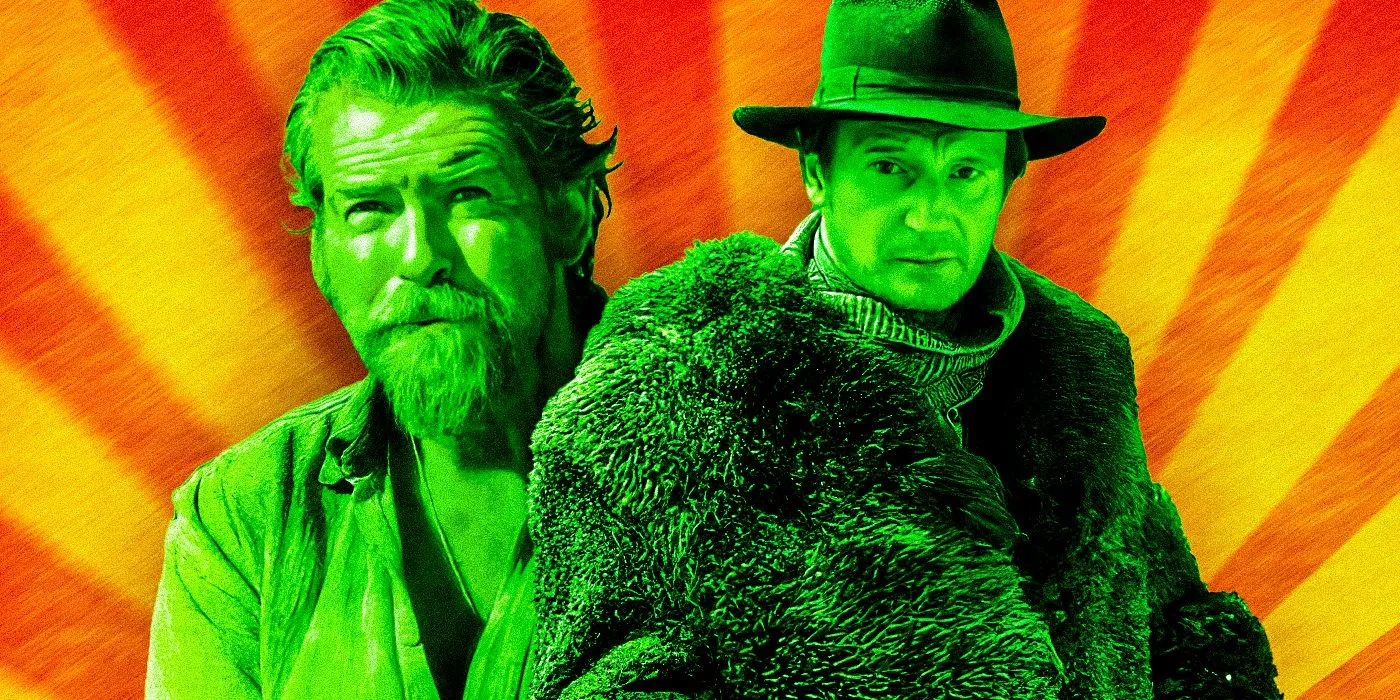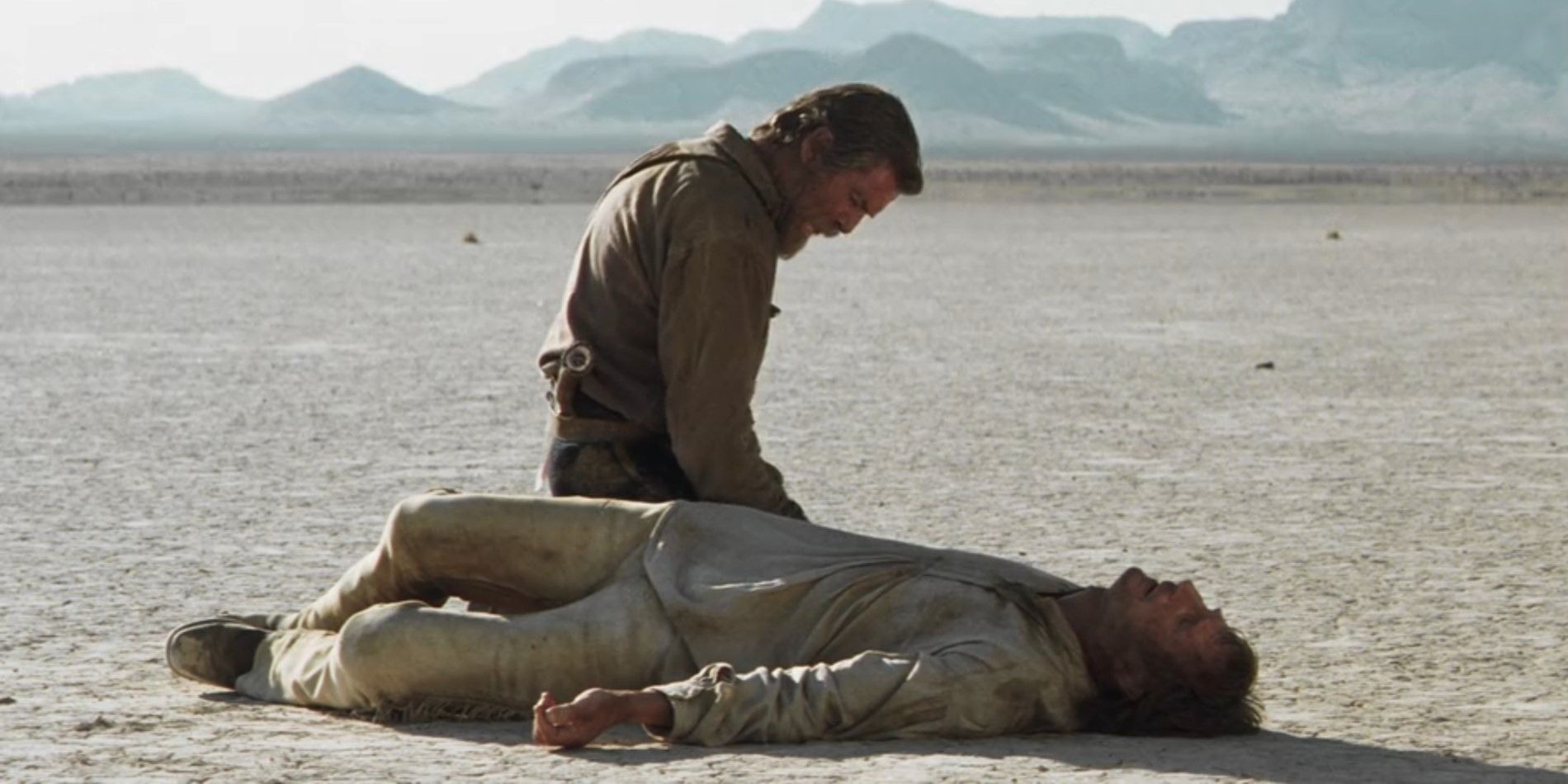Right from the onset, Seraphim Falls carries the traits of a slow-burning Western, rooted in realism, until its closing scenes steer the story in a more spiritual and symbolic direction. In the beginning, the film presents itself as a chase thriller where Carver (Liam Neeson) is hot on the heels of Gideon (Pierce Brosnan).
The intention was to kill him as revenge for a past wrong. As their journey progresses and the men continue deeper into the desert, the storyline begins to drift from straightforward action. Unfamiliar characters show up unexpectedly near the end, dropping puzzling statements and behaving in ways that defy logic.

Though it didn’t get much attention when it first premiered in 2007, Seraphim Falls is now gaining more attention on streaming platforms and could even be listed among Netflix’s most compelling Westerns.
As Carver pursues Gideon across the wild expanse of the American frontier, their chase leads them through several of Seraphim Falls’ scenic filming locations. The toll of their journey becomes evident in the wounds and fatigue they both carry, worsened by the harsh desert conditions and lack of water.
Though these physical factors could partly explain the surreal nature of the closing scenes, the film also incorporates strong symbolic themes that go deeper than surface-level storytelling.
Why Gideon & Carver Stop Fighting
They Decide To Let Go Of The Past
Rather than ending in one killing the other, the confrontation between Gideon and Carver comes to a halt when both men lay down their weapons and walk away into the distance until they vanish.
After an entire movie filled with intense hostility—Carver hunting for vengeance and Gideon fighting for his life—this moment of mercy might come as a shock. But their choice to walk away shows they’ve both decided it is time to release the grip of the past.
Interestingly, although they reach the same conclusion, they each arrive there from a different emotional journey. Carver comes to realize that his quest for revenge isn’t truly about killing Gideon. His pain is rooted in the loss of his wife and children, which is hinted at when he says “Rose” just before lowering his gun.
On Gideon’s part, he reaches a point where he acknowledges the harm he caused, finally offering an apology instead of hiding behind regret or justifying his actions. Their mutual decision to stop fighting provides them a chance to break free from their long-standing feud and allow each other to find peace.
Still, one mysterious figure appears later with a very different agenda. Seraphim Falls can currently be streamed on Netflix.
Who Is The Woman In The Desert?
Madame Louise Symbolizes The Devil
Out of nowhere, Madame Louise (Anjelica Huston) makes her presence known in the desert. Her appearance is strange, and the choices she offers the men are even stranger: for Gideon, it’s between a bullet and a horse; for Carver, it’s a gun or a flask of water.
Within the symbolic world of Seraphim Falls, Madame Louise represents the devil, as she presents both men with a life-or-death decision. Refusing the horse or water drastically reduces their chances of surviving the desert, and what she gives them instead—tools of destruction—only fuels their hatred and inner torment.
Several clues support this interpretation of her character. She speaks about “the demon rum,” and her eagerness to strike deals mirrors the way the devil is often portrayed. Her strongest resemblance to evil, however, draws from a biblical reference.
Just as Satan tempted Jesus for 40 days and nights in the wilderness, Madame Louise similarly tempts both Carver and Gideon. This puts her role in a more spiritual context, far beyond what appears on the surface.
Why Gideon & Carver Choose The Bullet And The Gun
They Choose Death Over Life Because Of Their Obsession With The Past
Even when faced with the possibility of survival, both Gideon and Carver willingly trade away vital resources for weapons—choosing a bullet and a gun over a horse and water. This decision reveals their frame of mind at that point in the story: they remain consumed by past events and the drive for revenge.
Their choices show they are more interested in destroying each other, even at the cost of their survival than in letting go and living. Gideon selects the bullet because Carver is a living reminder of his deepest regrets—he cannot come to terms with his actions and keeps running from accountability.
Carver, on the other hand, channels his pain into vengeance, refusing to process his grief more healthily. Their choices reflect the emotional weight they carry, as both struggle between letting go and holding on. That final choice becomes a test of whether they will carry the past to their grave or move forward and live.
The Man At The Watering Hole Explained
He Is A Reference To Greek Mythology
Another mysterious figure, played by Wes Studi, appears at a watering hole. He, too, shows up in a way that feels otherworldly and demands a price from both men for drinking from the water—declaring that failure to pay means they will owe their lives.
This character is modeled after Charon from Greek mythology, the ferryman who escorts souls across the River Styx into the afterlife. Though the name isn’t used in the film, his actions and purpose align with that myth.
When both men meet him, he presents a choice: either pay and move forward, or keep what they have and turn around. Charon and his watering hole serve as a checkpoint of sorts—everything they’ve experienced before this feels like a form of Purgatory, but crossing over into the desert beyond symbolizes entering Hell.
If either Gideon or Carver had refused to pay, they likely wouldn’t have been allowed to continue, keeping them trapped in their cycle of pain.
Were Gideon & Carver Dead At The End Of Seraphim Falls?

They Might Have Been Moving Through The Afterlife
Even though it appears that both men spare each other and go their separate ways, there’s a deeper interpretation of how Seraphim Falls ends. As Gideon continues his walk through the desert alone, the movie takes a sudden turn into more abstract territory.
Characters like Charon and Madame Louise suggest that what the audience is seeing has shifted from realism into something closer to spiritual metaphor. It raises the possibility that Gideon and Carver may have already died before the final scenes.
There are various elements scattered across the film that support this idea. In Greek mythology, Charon only carries the souls of the dead, which could be the case here as well. The strongest indication comes from the final scene—both men slowly vanish as they walk away from the desert.
This eerie fading away hints that they may have been traveling through some form of spiritual limbo and that their eventual decision to stop fighting allowed them to pass on.
What Seraphim Falls’ Ending Means
War Is Hell
The final meaning behind the ending of Seraphim Falls ties back to its central story: Carver’s drive for revenge over his family’s death, and Gideon’s guilt for ordering the attack. Both men allow this single moment in time to consume their lives, nearly destroying them completely.
Their conflict represents something bigger—a reflection of how war leaves deep emotional scars that linger even when the physical battles are over. The movie subtly presents their feud as a mirror of how past conflicts can keep resurfacing in different forms.
Gideon had been a Union captain while Carver fought as a Confederate colonel. By the time Carver’s home was burned, the Civil War had already ended, making Gideon’s actions feel like an act of punishment rather than military duty.
The story points out how wars don’t end with treaties—they continue within the hearts and minds of those affected. The violent cycle keeps going, driven by memories that refuse to fade. This is what fuels both Carver’s relentless pursuit and Gideon’s overwhelming guilt.
Seraphim Falls operates on multiple levels, using heavy symbolism and emotional depth to share its themes. Though it didn’t do well commercially or with critics when it was first released, the film carries more weight than it was given credit for.
Its style is different from the usual Westerns, even though it shares some surface traits with Clint Eastwood’s films. Taking a closer look at its ending reveals why this Western with Liam Neeson and Pierce Brosnan stands out from others.



